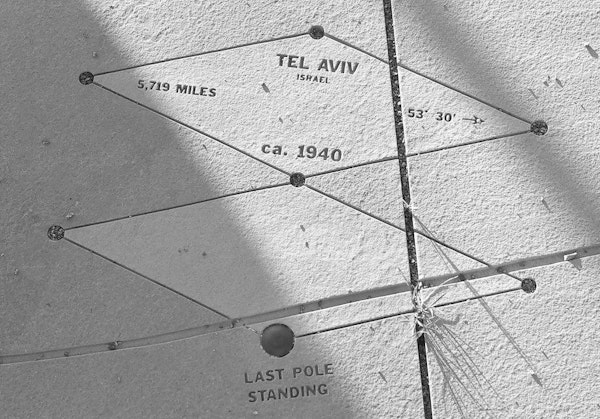
Remembering Roy Gold, Who was Not Excessively Interested in Books
In this gentle memorial, Nicholas Jeeves takes us on a turn through a Borgesian library of defacements. Jeeves’ quarry, the (inventive and invented) Professor Roy Gold, would seem to have been an outsider artist of his books, and his dust-jacket daubings leave an ambiguous legacy. Should such biblio-graffiti be accounted irreverent mischief? Does it betray anti-bookishness in the secret heart of a bookish man? Or is something else afoot? Perhaps, under the right conditions, doodling can become something like a theory of reading. After all, what is to be done with all our paper books in an age of textual dematerialization? Roy Gold stands over our shoulders, brush in hand…
— D. Graham Burnett, Series Editor
May 1, 2018
 Scroll through the whole page to download all images before printing.
Scroll through the whole page to download all images before printing.Detail from the cover of a book in Roy's collection, John Hunt's The Ascent of Everest, shown in full below.
Károly Tibor Goldman, better known to us as Roy Gold, was born on May 12th 1918, and died on his birthday ninety years later. In the years in-between he distinguished himself as a scholar and essayist, and acquired some public affection with his regular contributions to BBC Radio 4’s Folio.
Being that May 12th 2018 marks both the centenary of his birth and the ten years that have passed since his death, it seems a fitting moment for me to reflect on the modest role I have played in his story, and to share with readers a much lesser known aspect of his legacy, the unique library he kept in his Cambridgeshire home.
I met Roy just once, and very briefly, in 2007. I had been trying to gather information about a memoir, published privately in India in or around 1863, in which the rules of snooker appeared to have been set down a good twenty years before they were formally articulated by the British forces in Madras. That strange and puzzling volume was Manwel Barberi, The Falcon of Valletta and his remarks on Chance in a series of letters, which I had found on a recent visit to Lisbon and which no-one I knew in the book trade had been able to tell me anything about.
Roy — or more specifically his adopted son, James — was recommended to me by a London bookseller who had been my last hope in establishing The Falcon’s origins. James Gold, the bookseller explained, had been researching in his father’s library, and this had resulted in the discovery of a few unusual sporting texts, and, as he understood it, in James making some outlying contacts in that area of the trade.
Bedlands, the Gold family home, is an impressively ramshackle collection of buildings gathered within the parish of March in the Cambridgeshire Fens. A former stud farm, the main house is a long, single-storey affair constructed from large blocks of yellow sandstone. At the front of the property what would once have been a paddock is now a rose garden, flanked by a stable yard that leads, via an open forge and various other small outbuildings, towards disused gallops that have since been given over to meadow.
As James explained to me as we walked through the grounds, originally his father’s library had been located in what is now a reception room within the main house but, as it grew in size, in 1973 had been moved to a purpose-built extension accessed via the back kitchen. Roy himself had helped to build it, from the laying of the foundations to the fitting of the rows of cherry bookshelves, over the course of a long summer.
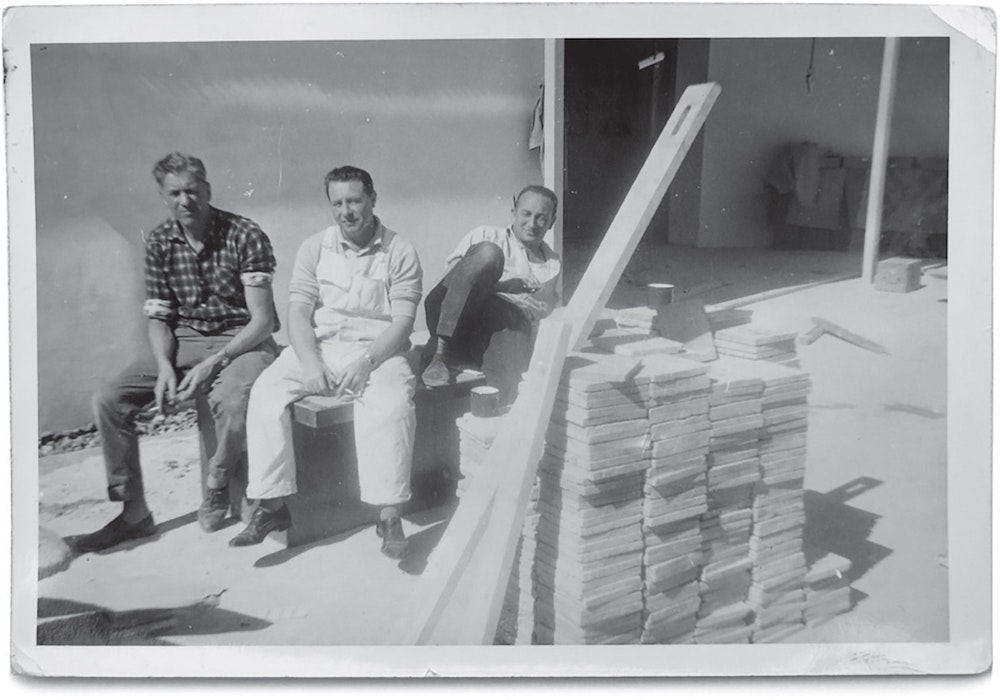 Scroll through the whole page to download all images before printing.
Scroll through the whole page to download all images before printing.Roy (left) in the summer of 1973, helping to build the extension to Bedlands that would later house his library.
As James and I stood at the library’s reading table — in fact a carpenter’s workbench covered in red baize — James showed me some of the books he had been looking at most recently. The first of these, I was astonished to see, was a 1965 first issue of Seamus Heaney’s Eleven Poems. It was a very fine example except for one important detail: on the cover, the word "Eleven" had been neatly crossed out in felt-tip pen and, underneath, "Nine" written in carefully calligraphed lettering.
Also on the table were some nice early editions of Sperber, Kant, and Russell, as well as a few modern paperbacks by Georgette Heyer, Kingsley Amis, and Evelyn Waugh. All of them had been carefully spoiled with designs in paint, pencil, or felt-tip pen, some with words or phrases, others with delicate patterns; others still with crudely drawn figures and objects. Throughout his life and even into his late eighties, James explained, his father had spent his evenings altering the covers of his books with the materials that came to hand. What surrounded me in this purpose-built private world was a collection of about nine thousand books, the great majority of which had been carefully and systematically defaced.
Looking about me and taking in the full extent of the collection, I felt a giddying thrill at the very idea: the consummate delinquency, the shameless delight taken in such an articulate and extended act of vandalism. In daring contrast to everything I had been taught about looking after books, Roy’s library represented a lifetime’s commitment to sheer mischief and I thought that wonderful.
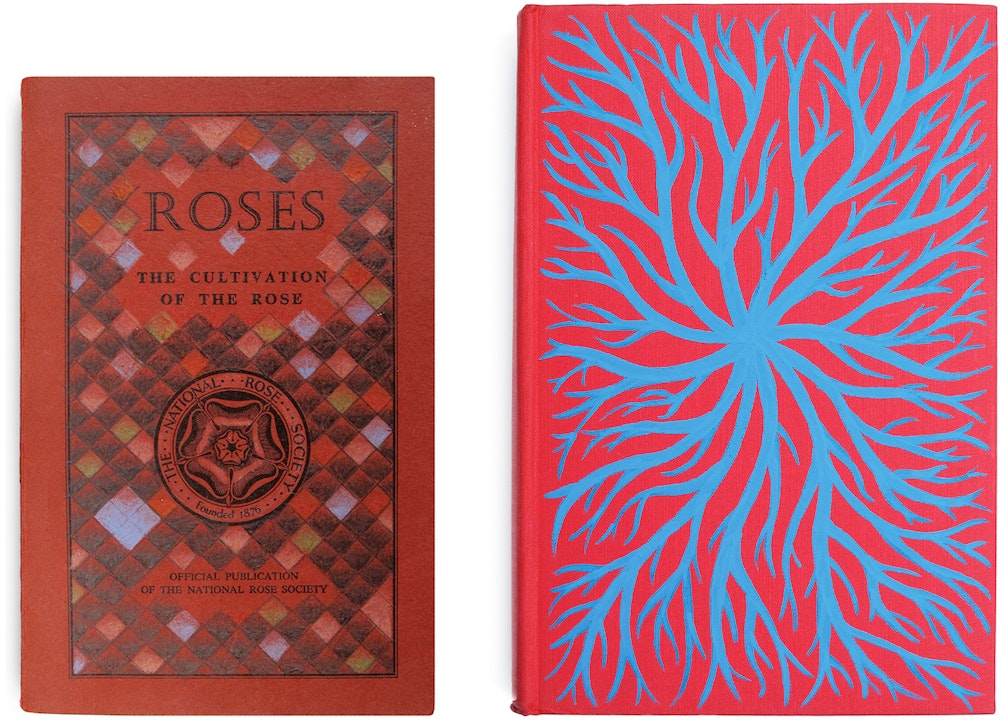 Scroll through the whole page to download all images before printing.
Scroll through the whole page to download all images before printing.Left: PAR–B–01911–JG: Bertram Park, Roses, The National Rose Society, 1963
Right: PAR–B–01731–CG: Bertram Park, The Collins Guide To Roses, Collins, 1956
Roy was a rose enthusiast and his garden contained few other flowering plants. The collection holds seventeen books on roses (that we have discovered so far), including five by Bertram Park, all of which have been elaborately modified.
Later, as James and I drank tea in the kitchen while leafing through The Falcon, I met Roy for the first and last time. Entering through a pair of swing doors and leaning heavily on a cane that did little to diminish his imposing height, Roy appeared surprised to find a guest in the house. James introduced us, briefly explained who I was and why I was there, and passed him my copy of The Falcon. Roy turned the book over in his hands, frowned, suggested we try “the Easton fellow” and, gathering up a mess of papers from the table, he poked open the door with his stick and left.
Although I didn’t know it at the time, by this point in his life Roy was suffering badly from the heart disease that would kill him a little less than a year later. I had not met him at his best, and James assured me that I should not take Roy’s present taciturnity personally.
James and I stayed in touch over the following months. We found that we shared a number of interests, and I would occasionally send him books or prints that I felt he might like. He in turn put me in touch with some useful contacts in the trade, including particularly Bill Littlefield, an American historian removed to Britain via Libya, who seemed to know quite a bit about The Falcon and with whom I eventually co-authored a brief article on the subject.
Roy died peacefully in the sun-room at Bedlands on his birthday in the spring of 2008. In the eulogy James gave at the funeral, he talked about the library as having since taken on the function of a memory palace, each book representing a moment from his father’s past. Through each of Roy’s graphic additions to the covers was revealed a state of mind, or at least a mood — here an exacerbation, an idea, a joke; there a preoccupation or a criticism.
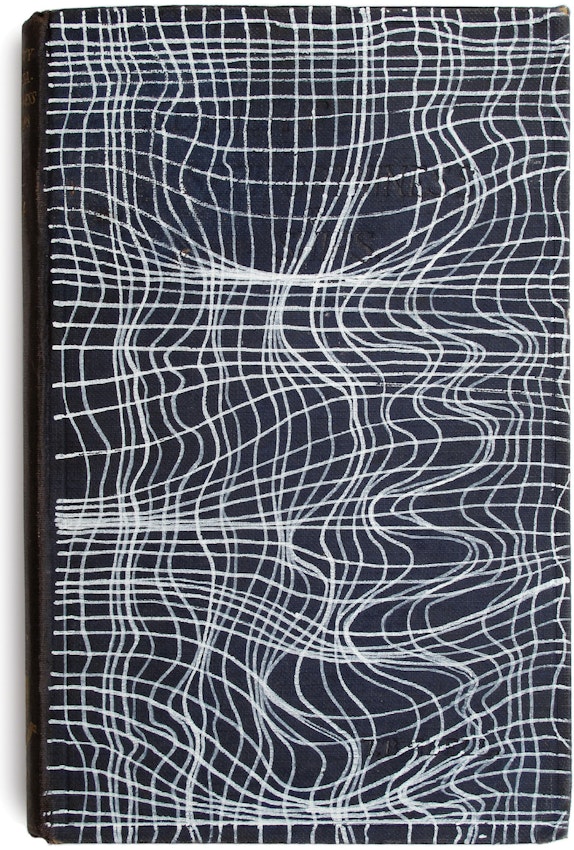 Scroll through the whole page to download all images before printing.
Scroll through the whole page to download all images before printing.ABE–TH–00017–JG: TB Abell, The Stability and Seaworthiness of Ships, University Press of Liverpool, 1926
Roy’s seasickness and consequent hatred of boats was legendary amongst his family and colleagues, and it is understood that it occasionally restricted his travel plans. Whether this book was bought as an attempt to remedy his aversion, or to justify it, we can only speculate, but the painting calls to mind tangled netting, woozy motion, and ocean topography all at once.
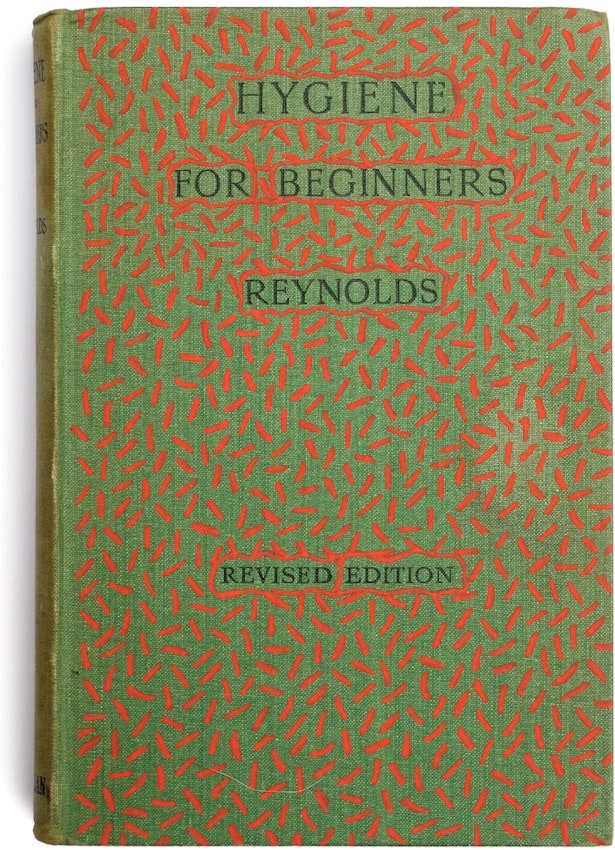 Scroll through the whole page to download all images before printing.
Scroll through the whole page to download all images before printing.REY–ES–02113–LA: Ernest Septimus Reynolds, Hygiene For Beginners, Macmillan, 1936
As with the previous example, Roy often employed a technique that implied pattern but on closer inspection reveals itself as illustration. Here a plain cloth cover in putrid green is decorated with teeming red microbes.
It was James who first suggested the idea of exhibiting some of Roy’s books. In August 2009 a small gallery had opened in my hometown of Hitchin, run by two enthusiastic young graduates looking for anything new and unusual with which to fill their calendar. I had mentioned this to James in passing, and he asked me if I thought they might be interested in Roy. They were. We showed fifty books in the gallery that winter, each selected by James from his favourites. We also produced a catalogue.
In the introduction to that catalogue, James wrote:
We don’t know precisely when Roy first started defacing his books. He doesn’t mention the hobby in his diaries, at least as far as we have discovered. But it might be safe to assume that he started sometime in late adolescence while at boarding school. That so many of the books were evidently bought second-hand means that the title pages are of little help. That they are arranged so haphazardly around the library is also problematic: no obvious system has revealed itself, with multiple books by the same author on the same subject dispersed throughout the room. In consequence we find books on unrelated topics brought unexpectedly together. … That Mike Brearley should sit comfortably next to Goethe evidently gave Roy no concern, who judged both as being fit for his library and his unique treatments.
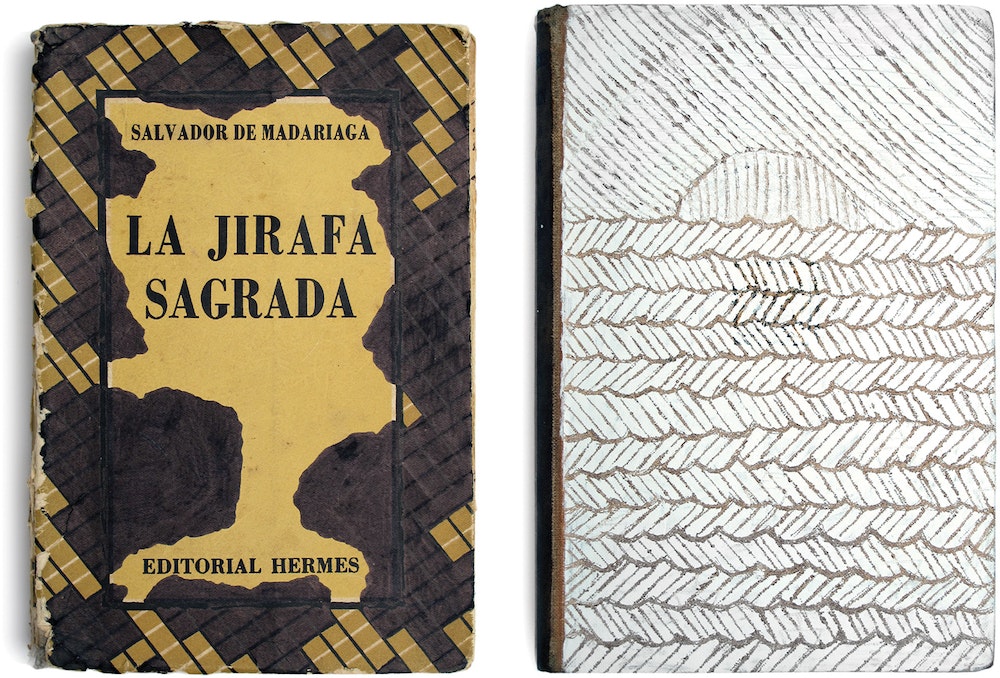 Scroll through the whole page to download all images before printing.
Scroll through the whole page to download all images before printing.Left: MAD–S–00911–JG: Salvador De Madariaga, La Jirafa Sagrada, Editorial Hermes, 1953
Right: WYN–M–00615–JG: May Wynne, The Smugglers of Penreen, The RTS Office, c.1940
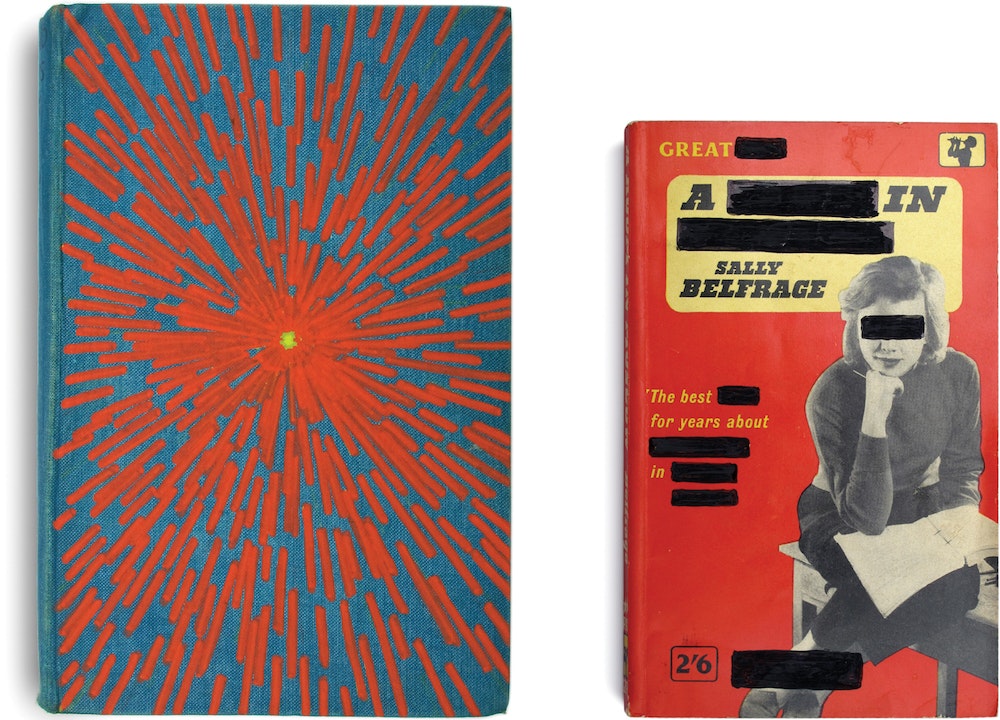 Scroll through the whole page to download all images before printing.
Scroll through the whole page to download all images before printing.Left: FAR–N–00092–SG: Negley Farson, Behind God’s Back, Victor Gollancz, 1941
Right: BEL–S–00914–SG: Sally Belfrage, A Room In Moscow, Pan, 1959
From such beginnings the idea of formally organising the library as “The Roy Gold Collection” took seed. James, I think, felt that the process of properly cataloguing the books would be a way to spend continued time with his father, if only in memoriam. For me the attraction was far more straightforward: it was a chance to see more examples of Roy’s superb vandalism, and to share these with the wider world.
We began in earnest in the spring of 2010, first by marking up the bookshelves with section numbers, then by photographing and systematically numbering the books. We then set about gathering from friends and relatives any associated memories or information that might be interesting to posterity, which was tremendous fun; and finally we entered all these details into a database.
I was not always available to help with the work. Sometimes I would visit for a few days, occasionally for a couple of weeks, and help out. For James it became a hobby attended to almost as frequently as Roy’s own. I made introductions and arrangements for more exhibitions: four small events followed, including one in France and another in the United States.
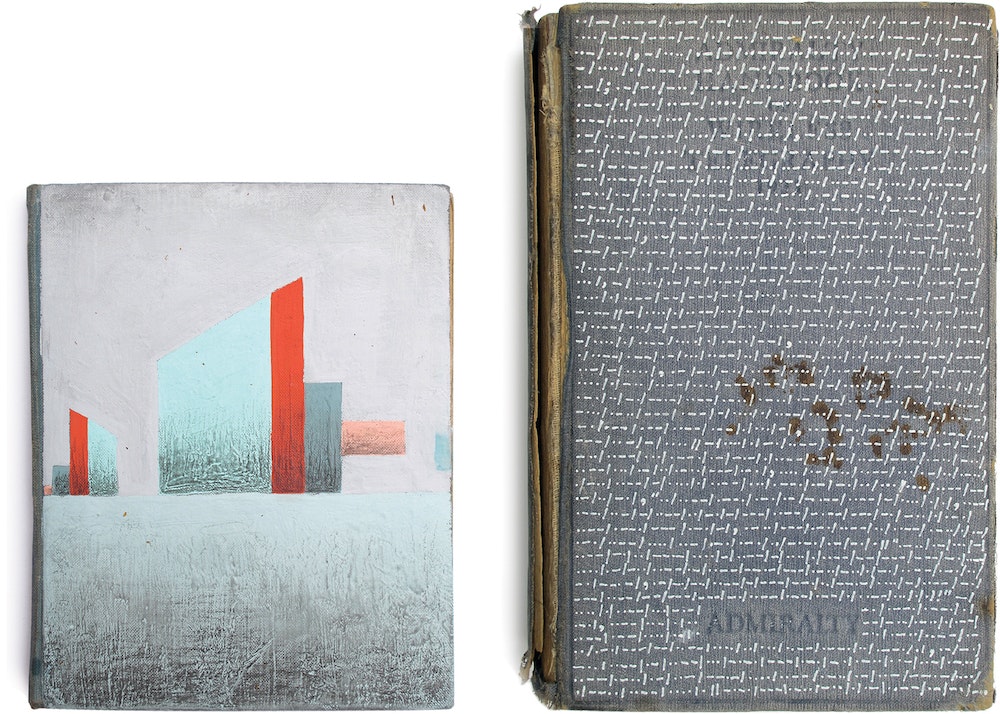 Scroll through the whole page to download all images before printing.
Scroll through the whole page to download all images before printing.Left: ANS–PF–00343–NJ: Peter F Anson, How To Draw Ships, The Studio, 1941
Right: HMSO–00016–JG: HM Stationery Office, Admiralty Handbook of Wireless Telegraphy, HM Stationery Office, 1931
Two further examples of Roy’s loathing of open water and sea vessels. How To Draw Ships is a sardonic depiction of two liners sinking into frigid depths, the inference being that ships are most accurately drawn sunk. The Admiralty Handbook is defaced with a transcription of Longfellow’s "Wreck of the Hesperus" — in Morse Code.
James has often remarked that Roy would probably have found such continued fetishising of his books absurd, despite the many hours of attention he himself must have lavished upon them. Indeed, Roy claimed on at least one occasion not to be very interested in books at all. James later discovered among his father’s papers a letter Roy had written to a student who had been enthralled by his four-volume Ibarra edition of Don Quixote (miraculously not defaced).
"We should not be excessively interested in books", he wrote. "We should be interested in stories, in language, in ideas, in perception, in imagination, in compression. These things are in books but they are not books. If a student finds he has an overwhelming interest in books he should consider a future as a bookbinder."
Roy seems to have taken as much pleasure from defacing his books as reading them — and on some occasions, perhaps more. But in a number of important ways, any disdain he might have expressed for the idea of books as objects rings quite false. Often the results of his efforts elevate the books rather than diminish them, and such is the extent of the collection that those books without his additions take on the effect of being, somehow, incomplete.
He was not much of an artist, though he must have improved over time, if only as an incidental outcome after so many years of practice. We cannot know this for certain, however, as while some covers evidence greater artistic skill than others, there is no reliable way of telling in what order they were defaced. Whether or not the books even constitute “art” is a trickier question still. That was almost certainly not the intention. In many ways it is closer to graffiti: equal parts creation and destruction, and inappropriate by definition.
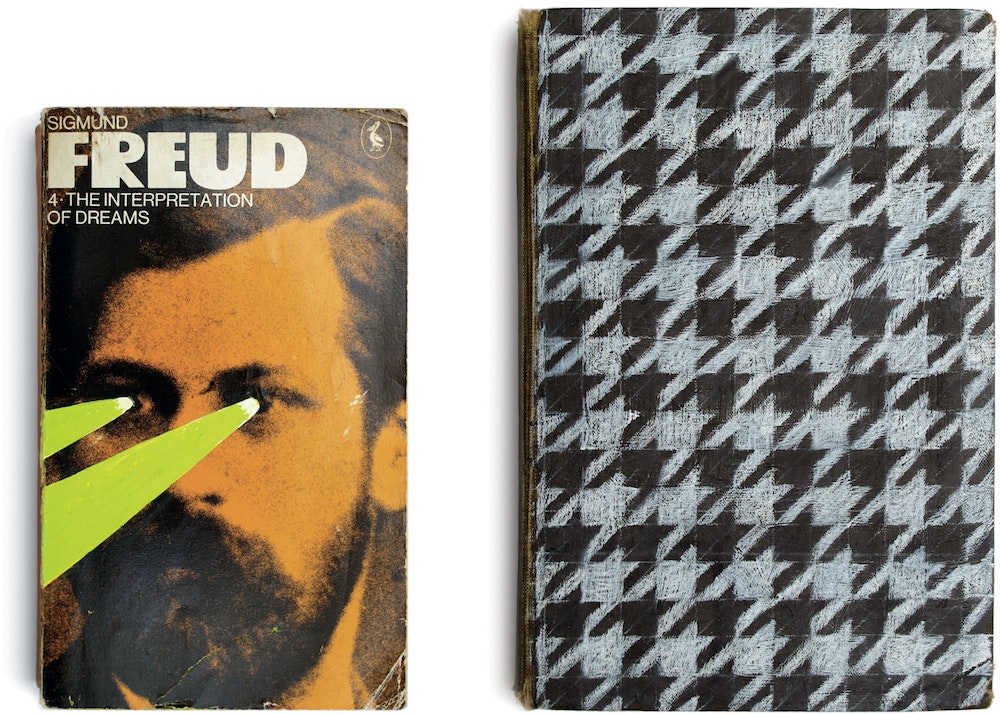 Scroll through the whole page to download all images before printing.
Scroll through the whole page to download all images before printing.Left: FRE–S–00203–JG: Sigmund Freud, The Interpretation of Dreams, Pelican Book, 1977
Right: HOF–L–02000–CG: L Hoffer, Chess, George Routledge & Sons, 1951
We must assume that Roy took a particular interest in Freud as there are twenty-seven books by and about him in the Collection, and all but one are altered. On the cover of this paperback edition of The Interpretation of Dreams, Freud’s eyes emit comically penetrating x-rays. Roy was also a keen chess player, and Hoffer’s best-selling book on the subject has been treated with a monochrome pattern of houndstooth.
As James and I came to understand one another better, James would share with me some of his father’s history. Roy had kept a diary since the age of nine, and had always been happy to share stories from his past with his children. So I find I am able to give a potted account of Roy’s life here.
He was born in Budapest in 1918, the only child of Alva and Elisabeth Goldman. Alva dealt in rare and valuable books, and from their Andrassy Street shop, which included an apartment on the first and second floors, the family enjoyed a relatively privileged existence for the times.
In 1933 a business opportunity brought the family to England. Alva had been offered the work of cataloguing and preparing for sale the library of Sir Robert Bligh James, a task he assessed would take him several months. Sir Robert, patently a well-connected man, arranged for papers, and the family moved to Brighton in September of that year. Once the sale of Sir Robert’s library had been completed, Alva and Elisabeth chose to put down more permanent roots. Conscious of the anti-semitism so profoundly on the rise in Europe, the call back to their homeland was no longer emphatic. Assisted by Sir Robert, the family bought a property in Ely, changed their name to Gold, and Karoly became Roy.
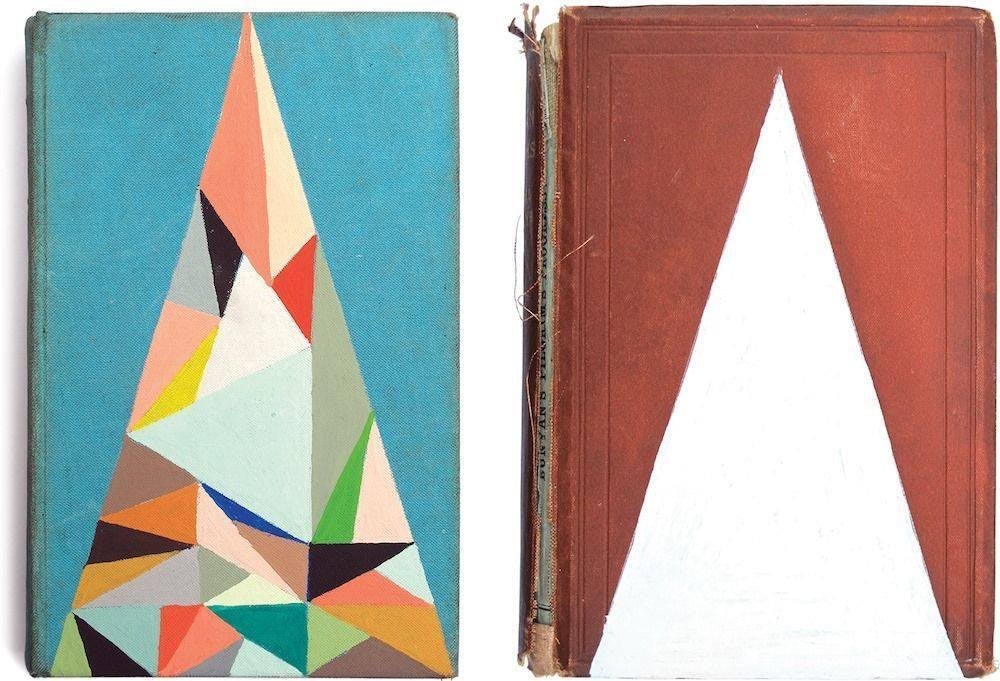 Scroll through the whole page to download all images before printing.
Scroll through the whole page to download all images before printing.Left: HUN–J–00105–NJ: John Hunt, The Ascent of Everest, The Companion Book Club, 1954
Right: HAW–N–01010–JG: Nathaniel Hawthorne, Passages from the American Notebooks of Nathaniel Hawthorne, Vol. I, Smith, Elder and Co., 1868
Two similarly composed covers with very different themes. On The Ascent of Everest Roy uses an arrangement of triangles to complete a view of the mountain’s facets. With Passages from the American Notebooks of Nathaniel Hawthorne, he is presumably commenting on Hawthorne’s unpleasant attitudes towards race, the white triangle acting as both an acerbic reference to the hoods of the Ku Klux Klan and the dunce’s cap.
After three unsteady periods at three different public schools, Roy, aged seventeen, took a year out to teach before starting his degree at Cambridge. He passed from undergraduate to research graduate, and would finally settle there as Professor of European Literature.
He married his fiancée Evelyn, a Girton undergraduate, in the summer of 1943. There followed some gossip that Roy was a spy for the British government There is no evidence to support such allegations, the only circumstantial connections being that he was well travelled, fluent in six or seven languages, and, thanks to Sir Robert, also on friendly terms with a number of senior officials in the Foreign Office.
Those who knew Roy personally thought any such idea preposterous. Funny, wildly indiscreet, and standing at six-feet-six with a thick head of salt-and-pepper hair, he cut an imposing and occasionally controversial figure. James told me that he was once accused by a prominent dean of being a disgrace, having arrived at a gala dinner without having changed out of his customary white tennis shoes. “I may be a disgrace,” he is reported to have replied, “but I intend to stay until I’m an outrage.”
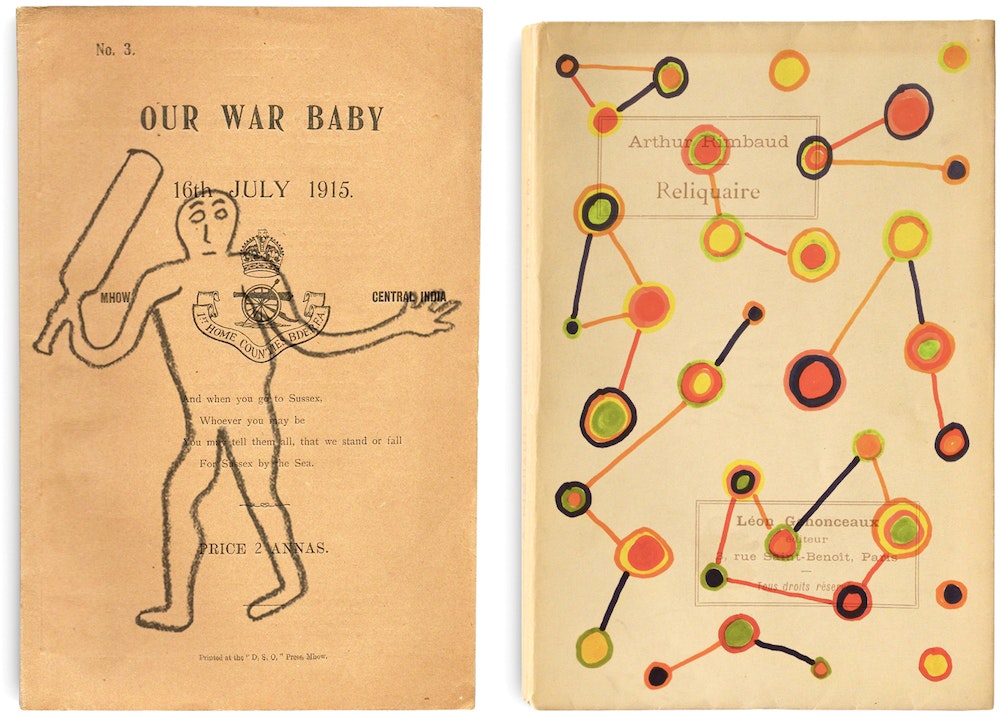 Scroll through the whole page to download all images before printing.
Scroll through the whole page to download all images before printing.Left: DSO-63007-JG: Our War Baby, D.S.O. Press, Mhow, 1915
Right: RIM-23017-NJ: Arthur Rimbaud, Reliquaire, Léon Genonceaux, 1891
Two of the rarer, and formerly valuable, books in the collection. Our War Baby is a humorous regiment journal compiled by the 1st Home Counties Brigade stationed in Mhow, India, and contains a number of pages of cricketing news. Very few copies are known to exist. Roy has defaced his with a sketch of the Cerne Abbas Giant wielding a cricket bat instead of a club. (He is possibly confusing it with the Long Man of Wilmington in the county of Sussex, a place which is referenced on the cover.) The once fine edition of Rimbaud's Reliquaire has been decorated with a Kandinsky-esque pattern of circles and lines in felt-tip pen, reducing its market value by about £6000.
Such anecdotes might give us some insight into Roy’s sense of humour, and even his style. But a more nuanced appreciation of his character can be found in his books. The most memorable of these, to my mind at least, is an amazingly rare first edition of Traité des Arbres Fruitiers covered with a painted design of delicately-drawn tomato vines — an addition, I am told, which once caused a visiting colleague of Roy’s to storm from the house in disgust.
Roy treated all his books equally regardless of any rarity value that they might otherwise have accumulated. By treating them all equally, he rendered them all equally valueless. That is one way of looking at it. Another way of looking at it is that Roy could take a merely rare book and make it absolutely unique. That is how we look at it, and should you ever find yourself visiting the Collection, or attending one of our occasional exhibitions, we hope you will come to the same view.
Nicholas Jeeves
Hitchin, April 2018
Nicholas Jeeves is a designer, writer, and lecturer at Cambridge School of Art. He is also designer and editor of Lucian's Dialogues of the Gods, a new edition of Lucian's comic masterpiece out now on PDR Press.
![[*Door creaks open. Footsteps*]: Fredric Jameson’s Seminar on *Aesthetic Theory*](https://the-public-domain-review.imgix.net/essays/mimesis-expression-construction/5448914830_cc288c2266_o.jpg?w=600&h=1200)
[Door creaks open. Footsteps]: Fredric Jameson’s Seminar on Aesthetic Theory
By meticulously translating his recordings of Jameson’s seminars into the theatrical idiom of the stage script, Octavian Esanu asks, playfully and tenderly, if we can see pedagogy as performance? Teaching and learning, about art — as a work of art? more
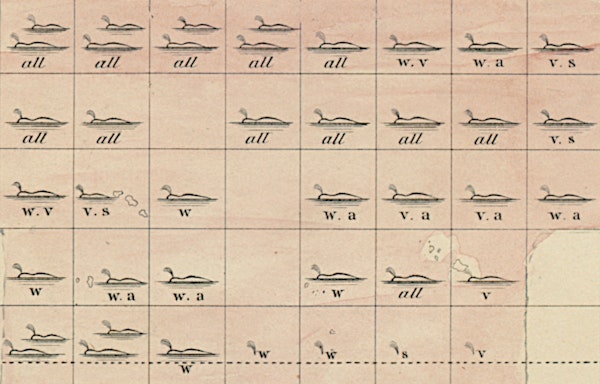
Chaos Bewitched: Moby-Dick and AI
Eigil zu Tage-Ravn asks a GTP-3-driven AI system for help in the interpretation of a key scene in Moby-Dick (1851). Do androids dream of electric whales? more
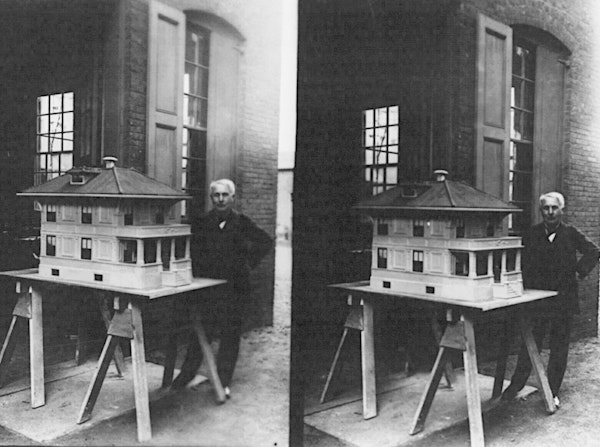
Concrete Poetry: Thomas Edison and the Almost-Built World
The architect and historian Anthony Acciavatti uses a real (but mostly forgotten) patent to conjure a world that could have been. more
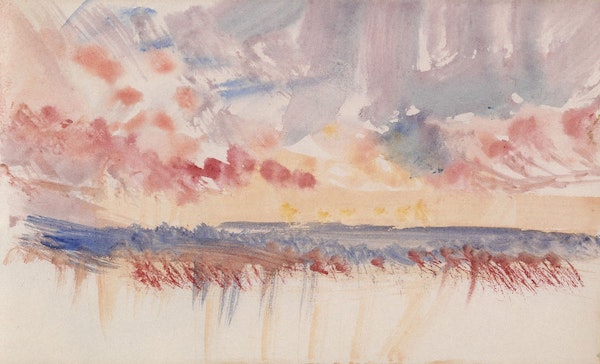
In the affecting work of sensory history, Peter Schmidt uses the “strikethrough” as a kind of shadow-writing: his “Encyclopedia of Light” reveals little dark threads of undoing — marks of the second thought that endlessly cancels the first. more
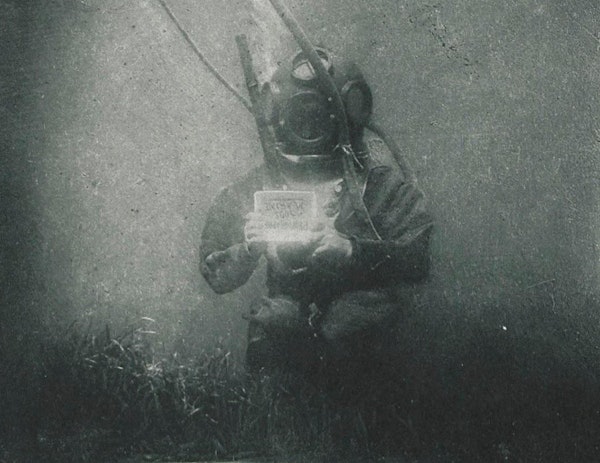
Brad Fox tells a history-story that pulls on a life-thread in the tangle of things. But that only makes it all a little knottier, no? more
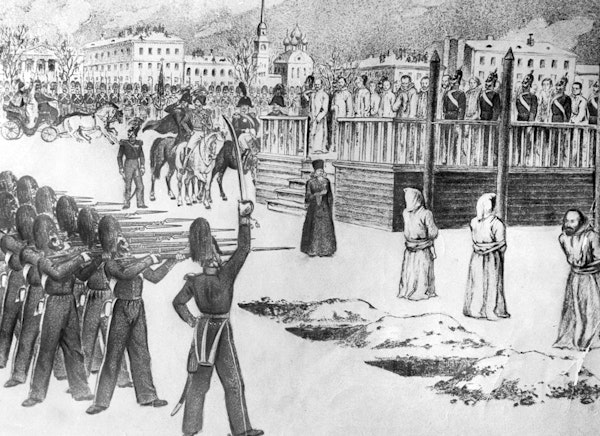
A second life? To live again? Fyodor Dostoevsky survived the uncanny pantomime of his own execution to be “reborn into a new form”. Here Alex Christofi gives these very words a kind of second life, stitching primary source excerpts into a “reconstructed memoir” — the memoir that Dostoevsky himself never wrote. more
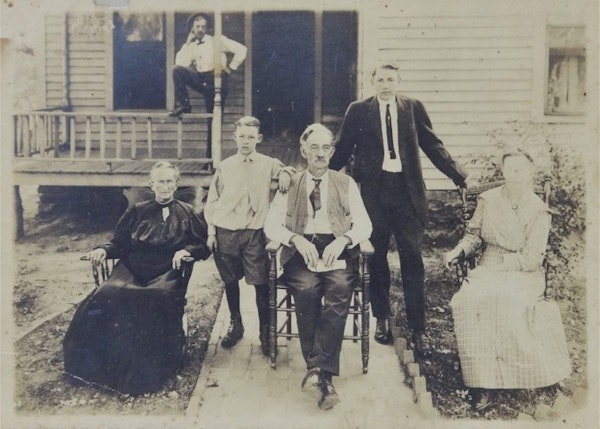
In this affecting photo-essay, Federica Soletta invites us to sit with her awhile on the American porch. more
.jpg?w=600&h=1200)
At the intersection of surfing and medieval cathedrals, from the contents of a suitcase, Melissa McCarthy stages a plot that walks its way across paranoia, language, and the pursuit of knowledge. more
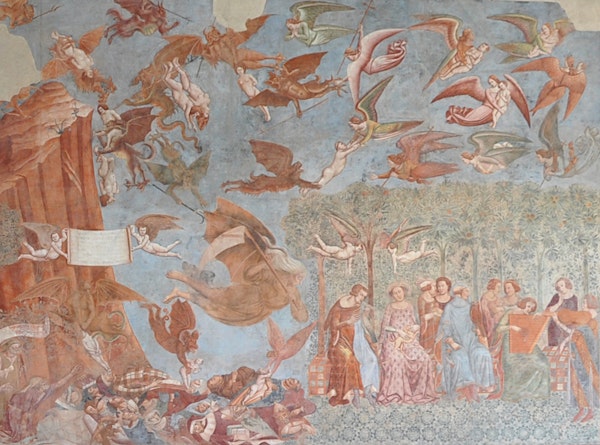
Food Pasts, Food Futures: The Culinary History of COVID-19
A criti-fictional course-syllabus from the year 2070 — a bibliographical meteor from the other side of a “Remote Revolution”. more
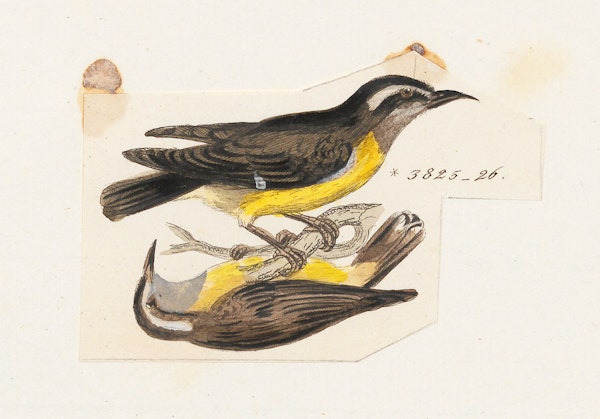
Titiba and the Invention of the Unknown
In this lyrical essay on a difficult and painful topic, the poet Kathryn Nuernberger works to defy history’s commitment to distance, to unsettling effect. more

In Praise of Halvings: Hidden Histories of Japan Excavated by Dr D. Fenberger
Roger McDonald on the mysterious Dr Daniel Fenberger and his investigations into an archive known as “The Book of Halved Things". more
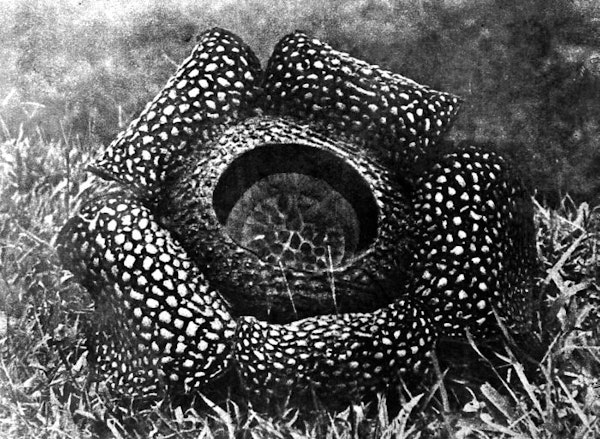
Weaving extracts from a naturalist’s private journals and unpublished sci-fi tale, Elaine Ayers creates a single story of loneliness and scientific longing. more
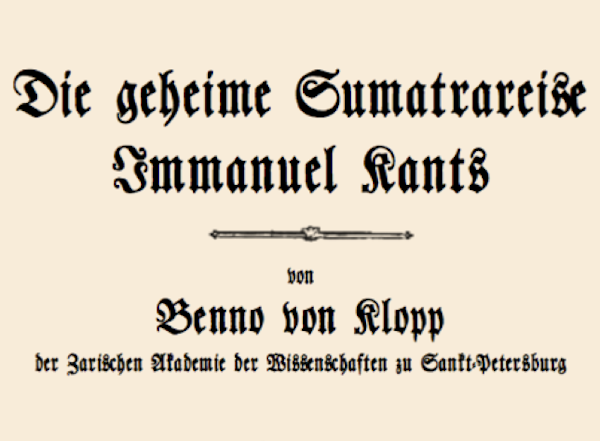
Kant in Sumatra? The Third Critique and the cosmologies of Melanesia? Justin E. H. Smith with an intricate tale of old texts lost and recovered, and the strange worlds revealed in a typesetter's error. more
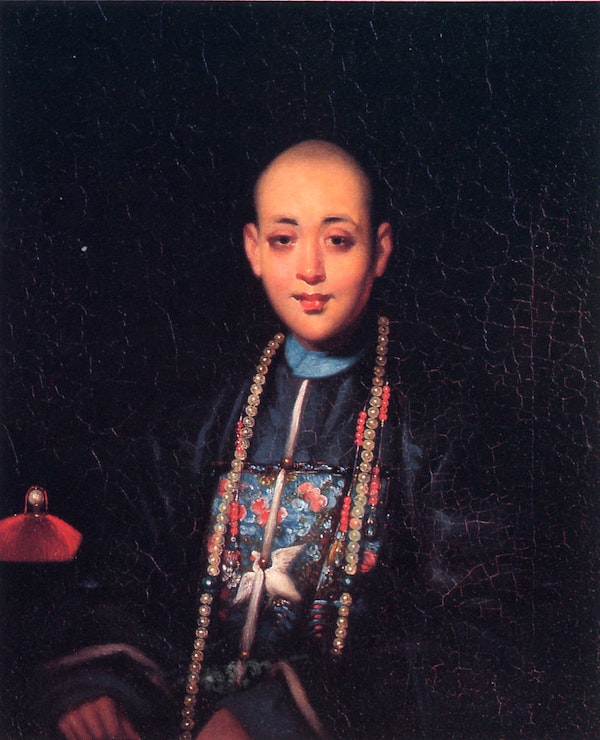
Lover of the Strange, Sympathizer of the Rude, Barbarianologist of the Farthest Peripheries
Winnie Wong brings us a short biography of the Chinese curioso Pan Youxun (1745-1780). At issue? Hubris, hegemony, and global art history. more
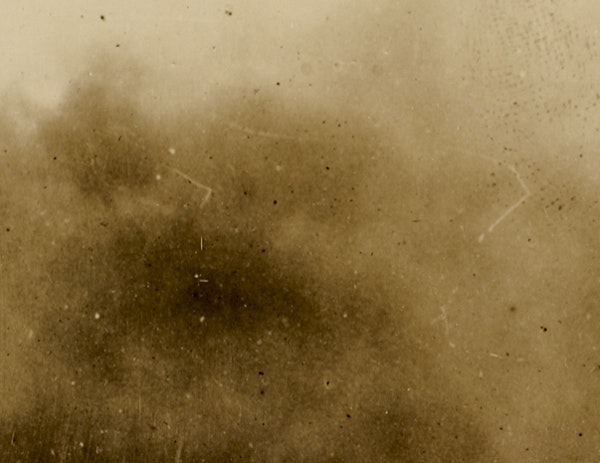
The Elizabeths: Elemental Historians
Carla Nappi conjures a dreamscape from four archival fragments — four oblique references to women named “Elizabeth” who lived on the watershed of the 16th and 17th centuries. more
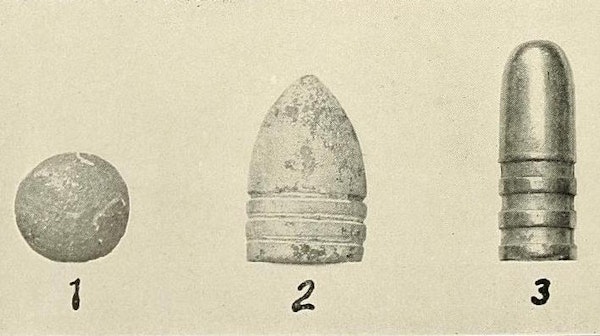
Dominic Pettman, through the voice of a distant descendant of the Roomba, offers a glimpse into the historiographical revenge of our enslaved devices. more
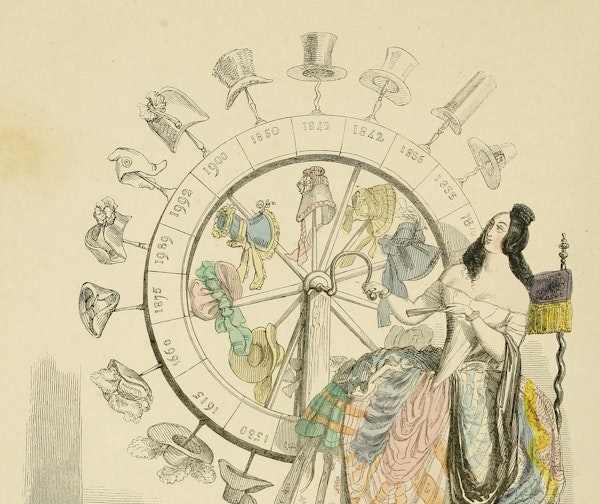
Every Society Invents the Failed Utopia it Deserves
In a late 19th-century anarchist newspaper, John Tresch uncovers an unusual piece, purported to be from the pen of Louise Michel, telling of a cross-dressing revolutionary unhinged at the helm of some kind of sociopolitical astrolabe. more
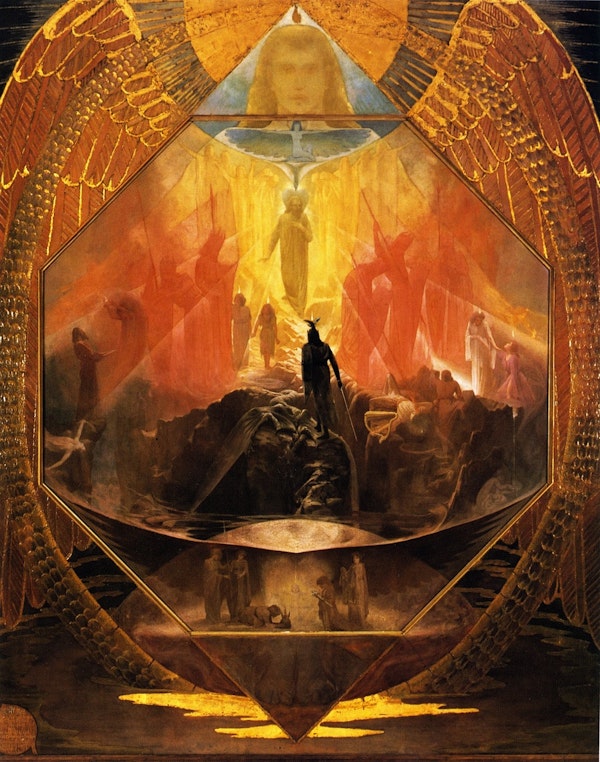
In Search of the Third Bird: Kenneth Morris and the Three Unusual Arts
Easter McCraney explores the ornithological intrigues lurking in an early-20th-century Theosophical journal. more





